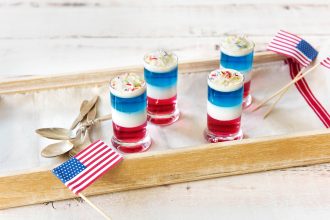How to Tell When Fruits and Veggies Are Ripe July 5, 2016
Fruits and veggies that are too ripe or – even worse – unripe? No, thank you.
Bananas and peanut butter are a snack match made in heaven – a dynamic duo, so to speak. But if you don’t play your cards right, your beloved yellow fruit will become too mushy to handle the generous smear (or two) of peanut spread. Of course, you could always get your nut fix by attacking the jar with a spoon, but it’s just not the same.
Needless to say, dealing with fruits and veggies that are either unripe or too ripe is a buzzkill. But don’t worry, we’ve put together a handy-dandy guide that’ll help you determine when your summertime staples are as (Hello)FRESH as possible (see what we did there?).
1. Avocados
Avoid avocados that are overly soft with large dark blemishes. Instead, opt for ones that yield gently to pressure in the palm of your hand. Then give ‘em a soft poke; you want the skin to “give” slightly but not remain indented. Finally, flip off the small cap at the top. If doing so reveals green flesh, you’re good to go.
If your avocados aren’t ripening fast enough to satisfy your guacamole cravings, store them in a brown paper bag at room temperature. To accelerate the process even further, toss in a banana. The yellow fruits emits ethylene, a gas that’ll do the trick.
Load up on healthy fats with avocado toast, smoothies, or this cherry pancake concoction.
2. Corn
Nothing screams summer like grilled corn-on-the-cob. To enjoy it at the peak of its flavor, look for a bright green and tightly wrapped husk. And you know those little strings sticking out from the top that get all over the kitchen when you’re shucking away? Those are called tassels, and you want to be sure they’re brown and ever-so-slightly sticky. Go ahead and take a peek inside before using a sharp object (your fingernail would work) to puncture a kernel. If the water that escapes is translucent rather than watery, the corn is ready to be enjoyed.
3. Pineapples
With these sweet fruits, it’s all about the smell. Pineapples won’t get sweeter after being picked, so take a whiff of their most aromatic part, the base, and steer clear of ones that lack a fragrant aroma.
Once the fruit feels slightly firm when squeezed and boasts a golden orange skin, it’s ready to be devoured. But to be 110% sure, try to pluck a leaf from the fresh-looking crown. If it comes off easily, you’re in luck.
Have you tragically missed the day of pristine ripeness? Don’t worry, it happens to the best of us. Simply toss your pineapple in the freezer or straight into the blender for a refreshing smoothie or cocktail.
4. Bananas/Plantains
When the banana’s peel is yellow with just a bit of brown, it’s ready to be peeled. Not in the mood to wait? Place it in a brown paper bag with apples or tomatoes to speed up the ripening process.
When it comes to plantains, don’t let their dark skins deter you. In fact, if the skin gives a bit and is black or brown with just a few yellow spots, the plantain is perfectly ripe and ready to be fried.
5. Mangoes
If the stem of your mango lacks an aroma, be patient! Before you go through the trouble of cutting these bad boys, wait for a sweet scent, bold color, and skin that’ll yield slightly to pressure.
Speaking of the daunting task of cutting mangoes, learn how here.
Show us your perfectly ripe fruits and veggies on Instagram by tagging #HelloFreshPics.
Happy Cooking!














